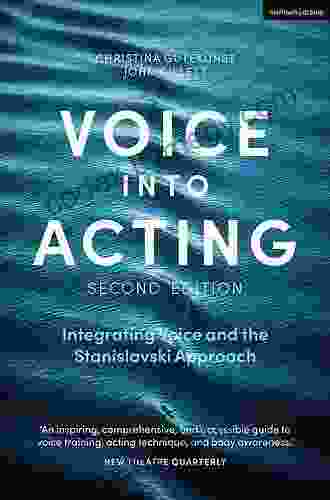How to Conquer Medical School Debt and Thrive: An Enriching Guide


5 out of 5
| Language | : | English |
| File size | : | 8893 KB |
| Screen Reader | : | Supported |
| Print length | : | 88 pages |
The path to becoming a doctor is often paved with financial challenges. Medical school is notoriously expensive, and the burden of student debt can weigh heavily on students' minds. But fear not! With the right strategies, you can conquer medical school debt and emerge triumphant.
This comprehensive guide will provide you with the insider knowledge and practical tips you need to navigate the financial complexities of medical school. From choosing the right loans to budgeting effectively, we've got you covered. So, take a deep breath, and let's dive into the world of medical school financing.
Chapter 1: Choose the Right Loans
The type of loans you choose will have a significant impact on your financial future. Federal loans offer lower interest rates and more flexible repayment options than private loans. However, there are limits to how much you can borrow in federal loans. Private loans can fill the gap, but they typically come with higher interest rates and less favorable terms.
Here's a breakdown of the different types of loans available:
- Direct Unsubsidized Loans: These loans are not based on financial need and are available to all medical students. The government pays the interest on these loans while you're in school.
- Direct Subsidized Loans: These loans are based on financial need and are available to students from lower-income families. The government pays the interest on these loans while you're in school and during grace periods.
- Grad PLUS Loans: These loans are available to graduate and professional students, including medical students. They are not based on financial need, but they do have higher interest rates than unsubsidized and subsidized loans.
- Private Loans: These loans are offered by banks and other private lenders. They typically have higher interest rates and less favorable terms than federal loans.
It's important to compare the different loan options and choose the ones that best fit your individual needs. Consider factors such as interest rates, repayment terms, and fees. You may also want to talk to a financial advisor to get personalized advice.
Chapter 2: Budget Effectively
Budgeting is essential for managing your finances in medical school. With careful planning, you can make sure that you have enough money to cover your expenses without going into excessive debt.
Here are some tips for creating a budget:
- Track your expenses: The first step to budgeting is to track your expenses. This will help you identify where your money is going and where you can cut back.
- Create a budget template: Once you've tracked your expenses, you can create a budget template. This will help you allocate your money to different categories, such as rent, food, and transportation.
- Stick to your budget: The most important step is to stick to your budget. This may require some discipline, but it's worth it in the long run.
There are many different ways to budget. Some people prefer to use a spreadsheet, while others prefer to use a budgeting app. Find a method that works for you and stick with it.
Chapter 3: Explore Scholarships and Grants
Scholarships and grants are free money that can help you pay for medical school. There are many different types of scholarships and grants available, so it's worth ng some research to see what you qualify for.
Here are some tips for finding scholarships and grants:
- Start early: The earlier you start looking for scholarships and grants, the more likely you are to find ones that you qualify for.
- Be thorough: There are many different sources of scholarships and grants, so be sure to cast a wide net when you're searching.
- Apply to everything you qualify for: Even if you don't think you'll win a particular scholarship or grant, it's still worth applying. You never know what might happen.
Scholarships and grants can make a big difference in your ability to pay for medical school. So, don't miss out on this valuable resource.
Chapter 4: Work Part-Time
Working part-time while in medical school can help you reduce your debt and gain valuable experience. There are many different part-time jobs that are available to medical students, such as:
- Teaching assistant: You can work as a teaching assistant for a medical school course.
- Research assistant: You can work as a research assistant for a medical school professor.
- Clinical assistant: You can work as a clinical assistant in a hospital or clinic.
- Tutor: You can tutor other medical students in subjects that you excel in.
Balancing work and school can be challenging, but it's possible to do both successfully. If you're considering working part-time, talk to your academic advisor to make sure that it's a good fit for you.
Chapter 5: Find a Residency Program That Offers Loan Forgiveness
If you're looking to reduce your medical school debt, consider choosing a residency program that offers loan forgiveness. There are many different types of loan forgiveness programs available, so it's worth ng some research to see if there's a program that's right for you.
Here are some tips for finding a residency program that offers loan forgiveness:
- Talk to your medical school's financial aid office: They can provide you with information about residency programs that offer loan forgiveness.
- Do your own research: There are many websites and resources that can help you find residency programs that offer loan forgiveness.
- Interview at programs that offer loan forgiveness: This will give you an opportunity to learn more about the program and ask questions about the loan forgiveness benefits.
Loan forgiveness can be a great way to reduce your medical school debt. If you're considering this option, be sure to do your research and find a program that's right for you.
Paying for medical school doesn't have to be a daunting task. By following the tips in this guide, you can conquer your debt and emerge triumphant. Remember, you're not alone in this journey. There are many resources available to help you succeed.
So, take a deep breath and embrace the challenge. With hard work and dedication, you can achieve your dream of becoming a doctor.
5 out of 5
| Language | : | English |
| File size | : | 8893 KB |
| Screen Reader | : | Supported |
| Print length | : | 88 pages |
Do you want to contribute by writing guest posts on this blog?
Please contact us and send us a resume of previous articles that you have written.
 Book
Book Novel
Novel Page
Page Chapter
Chapter Text
Text Story
Story Genre
Genre Reader
Reader Library
Library Paperback
Paperback E-book
E-book Magazine
Magazine Newspaper
Newspaper Paragraph
Paragraph Sentence
Sentence Bookmark
Bookmark Shelf
Shelf Glossary
Glossary Bibliography
Bibliography Foreword
Foreword Preface
Preface Synopsis
Synopsis Annotation
Annotation Footnote
Footnote Manuscript
Manuscript Scroll
Scroll Codex
Codex Tome
Tome Bestseller
Bestseller Classics
Classics Library card
Library card Narrative
Narrative Biography
Biography Autobiography
Autobiography Memoir
Memoir Reference
Reference Encyclopedia
Encyclopedia Jessica Glasscock
Jessica Glasscock Clarice Brough
Clarice Brough Paul Andrew Asmuth
Paul Andrew Asmuth Christine Schimpf
Christine Schimpf Chris Weyers
Chris Weyers Chris Gall
Chris Gall Shaina Rudolph
Shaina Rudolph Natalia Rojas
Natalia Rojas Chris Bradley
Chris Bradley Edward J Balleisen
Edward J Balleisen Christina Harbridge
Christina Harbridge Emily Bartlett
Emily Bartlett Jill Bush
Jill Bush Mark Evanier
Mark Evanier Paul Feldwick
Paul Feldwick Chris Hoke
Chris Hoke Christopher Gidlow
Christopher Gidlow Christopher Byrd Downey
Christopher Byrd Downey Victoria Tennant
Victoria Tennant Chris Dyer
Chris Dyer
Light bulbAdvertise smarter! Our strategic ad space ensures maximum exposure. Reserve your spot today!

 Jared PowellIntegrating Voice and the Stanislavski Approach: A Journey to Unparalleled...
Jared PowellIntegrating Voice and the Stanislavski Approach: A Journey to Unparalleled... Dave SimmonsFollow ·19.8k
Dave SimmonsFollow ·19.8k Wesley ReedFollow ·5.8k
Wesley ReedFollow ·5.8k Allen GinsbergFollow ·4.5k
Allen GinsbergFollow ·4.5k Ronald SimmonsFollow ·4.5k
Ronald SimmonsFollow ·4.5k Raymond ChandlerFollow ·6.8k
Raymond ChandlerFollow ·6.8k Cade SimmonsFollow ·2.5k
Cade SimmonsFollow ·2.5k Casey BellFollow ·17.2k
Casey BellFollow ·17.2k Clark CampbellFollow ·3.6k
Clark CampbellFollow ·3.6k

 Rick Nelson
Rick NelsonThe Power of Positivity: 51 Motivational Quotes to...
In the tapestry of life, we encounter...

 Lee Simmons
Lee SimmonsThe Indian War of 1864: A Devastating Conflict in the...
The Indian War of 1864 was a brutal...

 Eddie Bell
Eddie BellQueen: The Unauthorized Biography: Unraveling the Secrets...
Prepare to delve into the captivating...

 Dion Reed
Dion ReedUnveiling the Imperfect Gems of Trauma and...
In the tapestry of...

 Desmond Foster
Desmond FosterThirty-Six Years in the Rockies: A Timeless Masterpiece...
A Journey Through Time and...
5 out of 5
| Language | : | English |
| File size | : | 8893 KB |
| Screen Reader | : | Supported |
| Print length | : | 88 pages |











